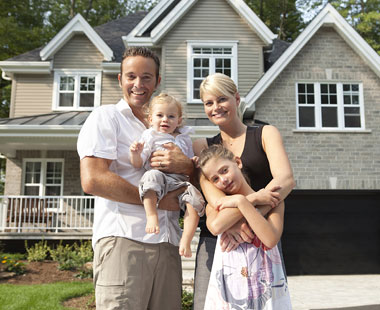Somewhere on the way back to the city, Americans got sidetracked.
Polling by the real estate advising firm RCLCO finds that 88 percent of Millenials want to live in cities. Their parents, the Baby Boomers, also express a burning desire to live in denser, less car-dependent settings. But in the past decade, many major cities saw population declines, and the overwhelming majority of population growth was in the suburbs.
The trends have spawned stories like this one, from America’s Finest News Source, headlined, “Family Of Five Found Alive In Suburbs.”
BUFFALO GROVE, IL-The Holsapple family, long feared missing or spiritually dead, was found alive in the Chicago suburbs Monday, somehow managing to survive in the hostile environment for more than eight years.
Rescuers discovered the five-person clan after a survey plane spotted a crude signal fire the family had created in a barbecue grill.
All ended well for the Holsapple clan, thanks to paramedics who rushed them back to civilization, but what about the roughly 150 million other Americans who are still stranded out there, out by the mall, in all those creepy look-alike subdivisions?
As one commenter on this website recently wrote, “Saying people prefer living in suburbs in the new century is a bit like saying people really liked living in East St. Louis, Watts, or Oakland in the 1970s.”
Watts? Really? I mean, I know that the real estate crash hit some suburbs hard, but last time I ventured out past the city limits they had the rioting relatively under control. The gun battles in the streets were down to just a couple a day. Heck, you could still get a tank of gas for less than I pay for a bag of groceries at my neighborhood Whole Foods.
Methinks we may have jumped the gun on the whole collapse of the suburbs bit.
So what’s really up with Americans and our weird relationship with the city? There are a lot of explanations for the discrepancy between where we live and where we say we’d rather.
It wasn’t so long ago that the Boomers, watching their suburban real estate values balloon and their kids prepare to graduate from college, could imagine selling high, ditching the McMansion, and moving to a condo downtown. Then the bubble burst, and those plans were put on hold indefinitely.
For the Millenials, the showstopper was jobs, or lack thereof. They managed to survive the last few years of college, but lacking paying work in the city, they’ve moved back in with mom and dad. So now they’re all kicking it in the TV room back on Deerhaven Drive, watching It’s Always Sunny in Philadelphia reruns and dreaming of big city living.
There are other factors that have slowed down the great urban migration that predate our recent economic woes: Crime rates are down nationwide, but that has done little to diminish the perception that cities are dark, violent places. Poverty, addiction, and blight still haunt many urban centers. Then there are the kids. The Millenials aren’t the first generation of young people to get all stoked about the city. The ones before them continue to pick up and leave as soon as Junior hits school age.
Of course, much of this is the result of ill-advised investment: We’ve poured money into unsustainable suburban development while starving the urban centers. (One writer on this website recently argued convincingly that subsidized sprawl is a giant Ponzi scheme.)
But I think there is a deeper force at work here. Here’s another headline that reads like it could have come out of the Onion: “Almost half of Americans want to live somewhere else.”
It’s actually from USA Today, and the accompanying story looks at a 2009 PEW Research Center poll that found that 46 percent of the public “would rather live in a different type of community from the one they’re living in now — a sentiment that is most prevalent among city dwellers.”
Among other things, the survey found that “Americans are all over the map in their views about their ideal community type.” The respondents divided themselves about evenly between small towns, suburbs, rural areas, and cities.
Could it be that we’re just conflicted people? That we fantasize about doing one thing, but do something different entirely?
Listen, I don’t mean to belabor this point. This is all just to say that the urban renaissance is not fait accompli.
And that’s why, in the coming months, I’ll be exploring ways that we can nudge the great urban revival along. I’m going on the assumption that while Americans seem to have an ideal vision of urban living, the reality of it often fails to stack up to the fantasy. I also think that our discontent often fails to provide the motivation to change our less-than-ideal, but perfectly comfortable suburban way of living.
As University of Illinois-Chicago anthropologist Arthur Cox said of the Holsapple family, “Shocking as it is, one eventually becomes acclimated and then numbed to the theme restaurants, cinema multiplexes, and warehouse-sized grocery stores.”
Yes, it’s bad out there in the ‘burbs. But it’s not half bad enough.




